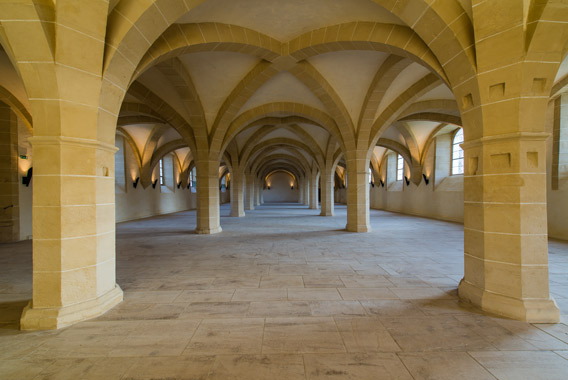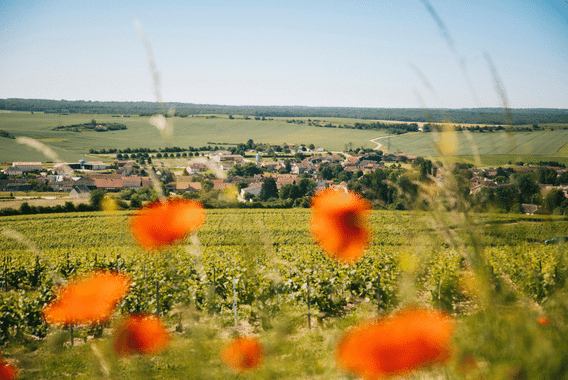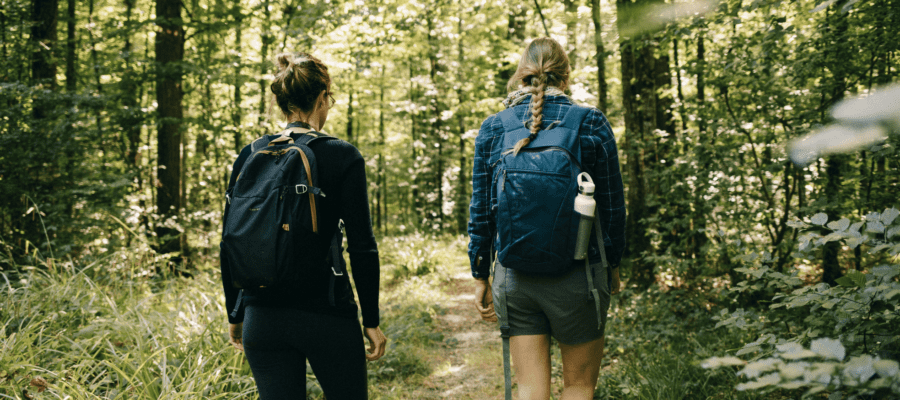2,000 km on foot. An epic crossing of 4 countries. An increasingly popular long-distance hiking route, with a reputation approaching that of the Pilgrim’s Way to Santiago de Compostela. Certified as a ‘Council of Europe Cultural Route’ since 1994. A route with many stages, from Great Britain to Italy via France. The Via Francigena awaits the walking and nature lovers in you!
And the good news is that the route crosses the Aube region, winding its way through forests, vineyards and villages. So how do you prepare for your journey? What are the exact stages of the Via Francigena in Aube? And what is the Crédenciale? We give you all the answers.
What is the Via Francigena?
The story of this epic trek
A little history, to set the scene (but quickly, I promise): the Via Francigena is the route taken by pilgrims in the Middle Ages to reach Rome from northern Europe. And if this historic route has been reconstructed, it’s thanks to a certain Sigeric. In 990, when he was ordained Archbishop of Canterbury, he set off for Rome to meet the Pope (imagine the poor man’s stress levels as he neared his goal). On his return, he decided to detail in his travel diary the 79 stages he passed through on his 2,000 km journey.
It’s thanks to him that the Via Francigena has been preserved! So, on behalf of all hiking enthusiasts: good work, Sigéric. And thank you, Sigéric.
The Via Francigena trek, a real expedition from Canterbury to Rome
The Via Francigena stretches from Canterbury (in England) to Rome (in Italy, just in case). It passes through 2 other countries, Switzerland and France (lucky us).
In France, the Via Francigena circuit starts in Calais and crosses the Nord-Pas-de-Calais, Picardie, Champagne-Ardenne (youpi) and Franche-Comté regions over almost 1,000 km. As the towns pass by, the landscapes change, but the surrounding countryside retains a special place in this extraordinary adventure.
The Via Francigena in Aube is a hundred-kilometer route through the villages and regional nature park of the Forêt d’Orient, in the east of the department. We’ll be talking about it next, you curious bunch!
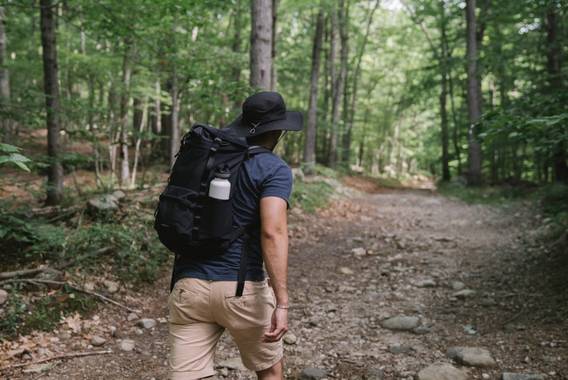
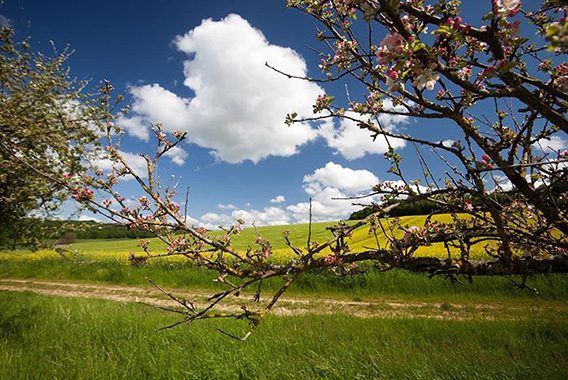
A few tips to help you prepare for your trip along the Via Francigena
Itinerary, stages, accommodation… The Via Francigena is worth preparing for!
To help you get organized, a number of guides are available, depending on the itinerary you’ve chosen. They contain all the information you need to prepare for this walking adventure: detailed maps, accommodation, restaurants, transport… You can get them right here.
You can also directly download this practical guide, which details the French circuit and the routes it is possible to take. For the more modern, you can download the Via Francigena app directly onto your smartphone!
The credential, THE essential document for enjoying the Via Francigena
It’s essential: to gain access to the reception facilities located along the Via Francigena, every hiker must present his or her Crédentiale. This is a document to be stamped at each stage of your journey, certifying your passage along the Via Francigena.
Don’t forget to get it before you leave!
Equipment adapted to a long-distance hiking trail
The perfect hiking kit? Walking shoes (take one size larger than usual), padded socks, a backpack whose weight is adapted to yours and a walking stick!
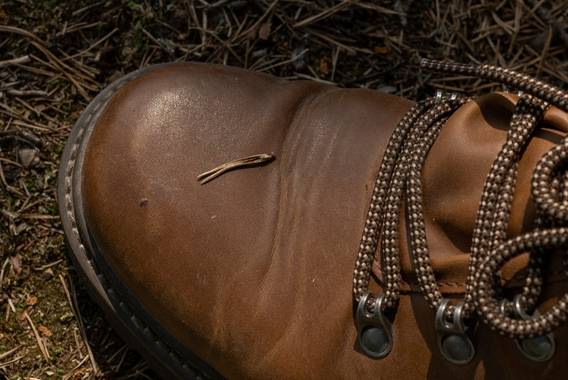
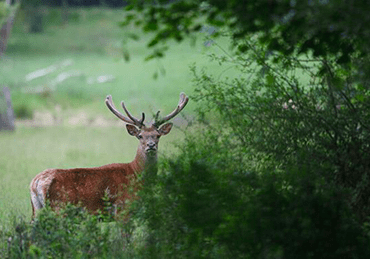
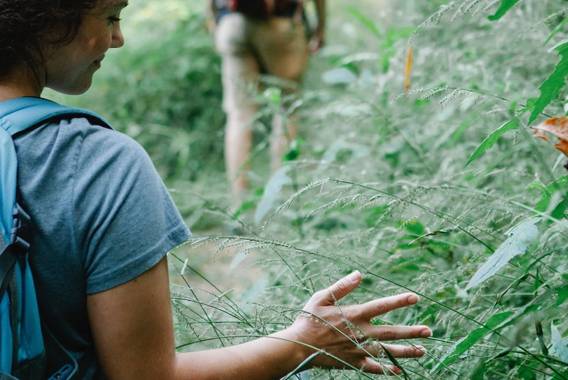
The Via Francigena in Aube: what a programme!
Here we are at last! Where can I find the Via Francigena hiking trails in Aube? How far is it? What points of interest can you discover along the way?
The route from Outines to Montmorency-Beaufort
This section of the Via Francigena begins in a village in the south-east of the Marne. It is 17.6 km long. Your route passes through villages with modest but remarkable churches, listed on the Route des églises à pans de bois, a treasure trove of Champagne heritage! These charming churches are renowned for the originality of their architecture and the precision of their proportions. Don’t miss Bailly-le-Franc or Lentilles!
Also close to the Via Francigena is the Étang de la Horre National Nature Reserve, which protects 415 hectares of wetlands. And just before reaching Montmorency-Beaufort, make a detour to the picturesque village of Villeret and the sparkling Saint-Ferréol church, located on the Route du Vitrail.
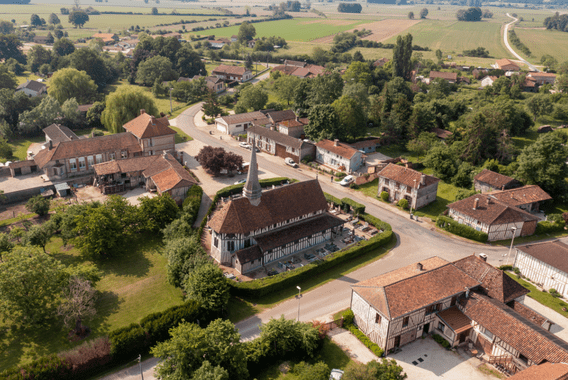
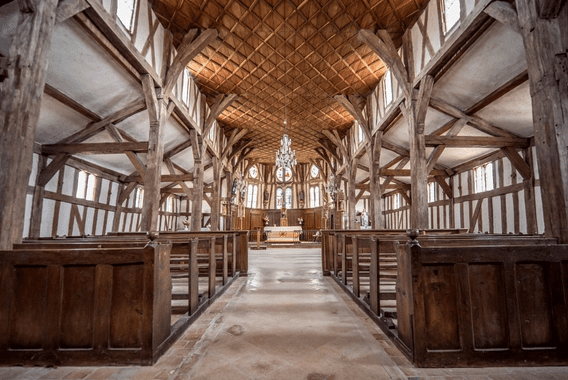
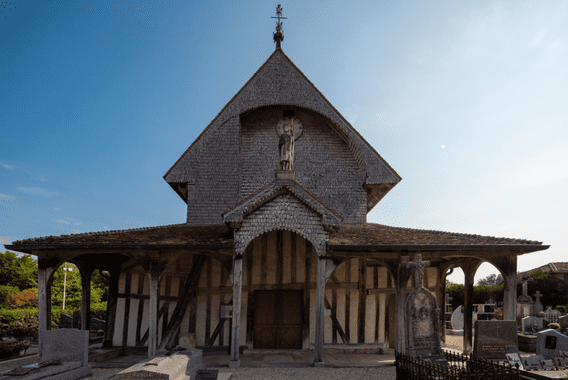
The route from Montmorency-Beaufort to Précy-Saint-Martin
22 km to cover. Your feet will be tingling with anticipation! This section of the Via Francigena passes through the charming village of Rosnay-l’Hôpital, famous for its unique church: the Church of the Assomption-de-la-Vierge, built on two levels and featuring a crypt. It’s also on the Stained Glass Route, so get ready to be amazed!
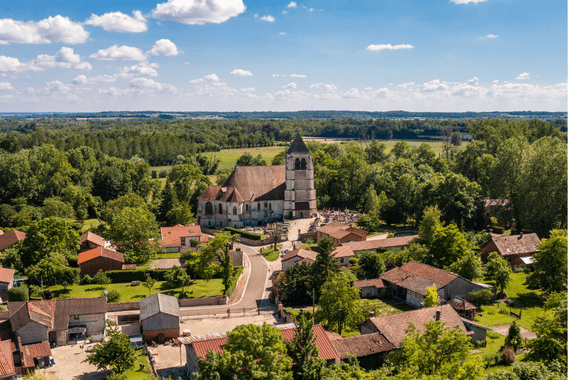
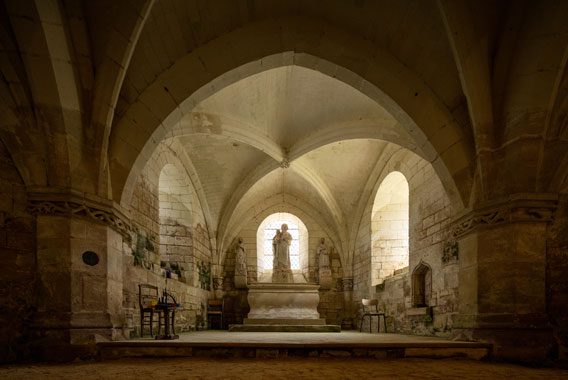
The route from Précy-Saint-Martin to Dienville
This section of the Via Francigena is only 13.5 km long, allowing you to enjoy the many points of interest along the way.
Let’s cut to the chase: this tour takes you through Brienne-le-Château, a charming little town in the heart of the Forêt d’Orient Regional Nature Park. Here, take time to visit the Napoleon Museum, housed in the former royal military school where the future emperor received his military education. The museum retraces his career, from military school to major battles, through a variety of collections.
From the town center, you can also see the imposing Brienne-le-Château castle and its large wooded park. The building is listed on the Route des Châteaux de l’Aube. It is open to the public from time to time, during guided tours organized by the Tourist Office.
This Via Francigena itinerary ends with a visit to the village of Dienville, where the church of Saint-Quentin houses the extraordinary Trésor des églises du Parc naturel régional de la Forêt d’Orient, a collection of ancient goldsmith’s work and religious sculptures.
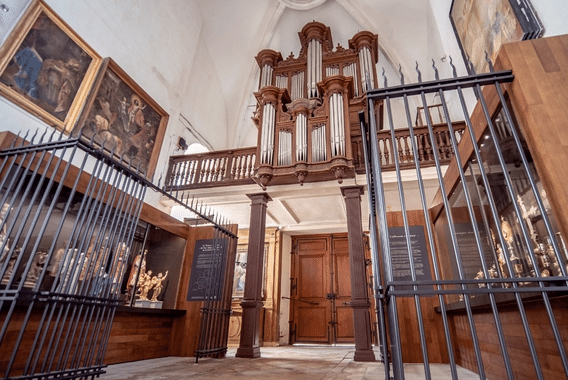
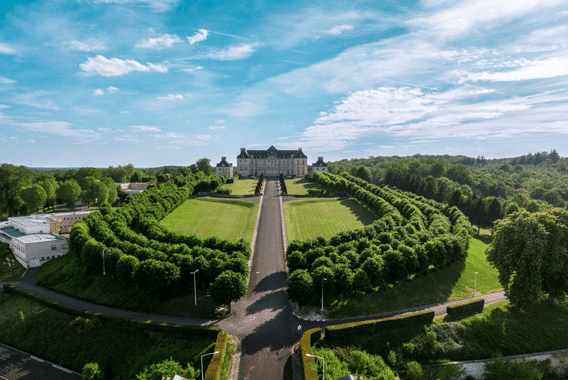
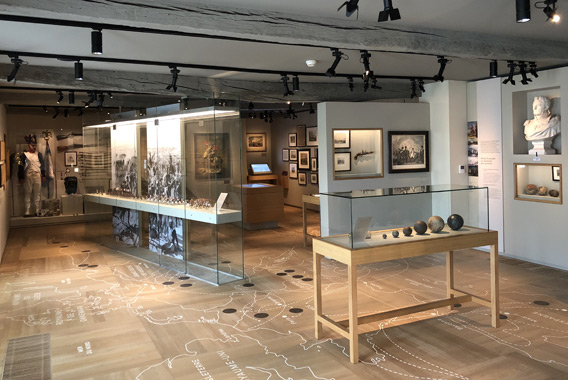
The route from Dienville to Dolancourt
Before continuing your journey on the Via Francigena, take advantage of the natural treasures offered by the Parc naturel régional de la Forêt d’Orient: enjoy its 5,000 hectares of forests, meadows and lakes. Dienville is home to the Lac Amance leisure park, with its many activities including swimming, water sports and cycling. Depending on the season, you can also watch migratory birds sweep by.
In the small village of Amance, take a break in the pottery and tile-making workshop to learn more about this traditional craft.
And of course, of course… When you arrive in Dolancourt, continue your Via Francigena adventure with a visit to Nigloland, a leisure park with 43 attractions perfectly integrated into a natural landscape!

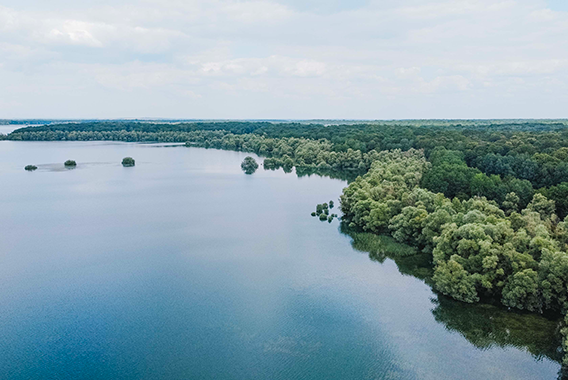

The route from Dolancourt to Baroville
Along this trail, you’ll pass through the Côte des Bar region, renowned for its rich cultural heritage, but also for… its champagne vineyards!
Your first stop is the town of Bar-sur-Aube. To discover the medieval history of this town in 10 stages, you can follow the palm circuit.
The route then takes you through a wine-growing environment. Take advantage of the opportunity to organize a cellar tour and a well-deserved champagne tasting in the small village of Baroville.
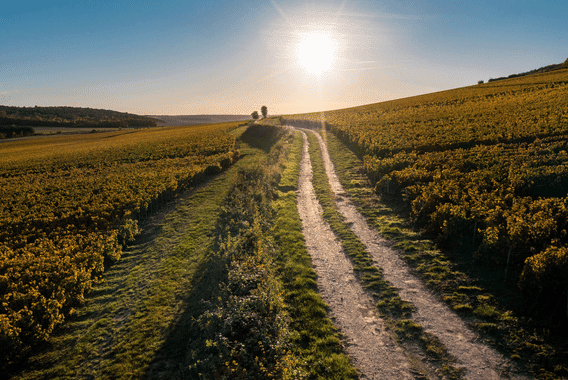
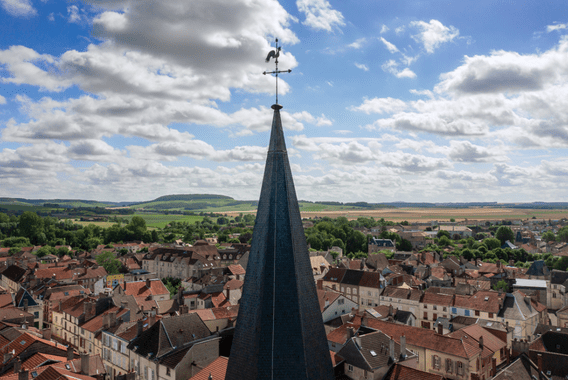
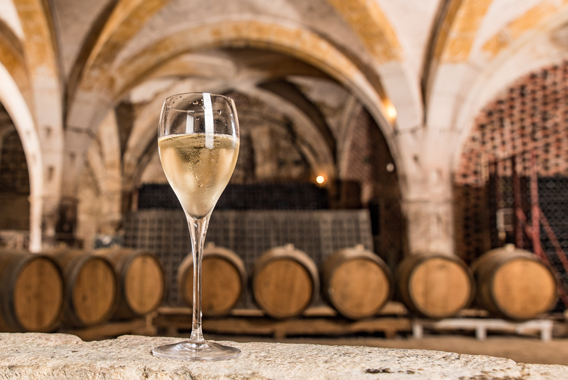
The route from Baroville to Orges
The Via Francigena route in the Aube region ends here, with this 26.7 km circuit. How are your feet feeling?
Forests, valleys, vineyards… the surrounding landscape is rich and poetic. Nearby is the village of Ville-sous-la-Ferté, home to one of Aube’s heritage treasures: the Abbey of Clairvaux, founded in 1115 by Saint Bernard, then transformed into a prison under Napoleon. From the chapel to the cloister and the former prison cells, visit this regional treasure and get your credentials stamped!
